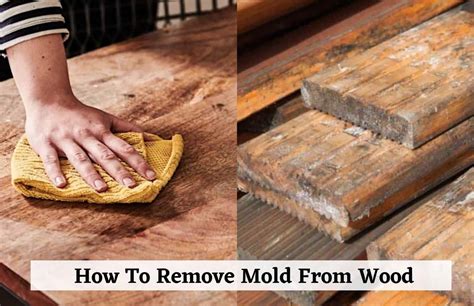How to Get Rid of Mold on Wood: A Comprehensive Guide
Mold on wood is not only unsightly but can also pose health risks. Fortunately, with the right approach, you can effectively remove mold and restore your wooden surfaces. This guide provides a step-by-step process, covering everything from prevention to tackling stubborn mold infestations.
Identifying the Mold Problem
Before you start cleaning, it's crucial to identify the type and extent of the mold. A small patch of surface mold is much easier to handle than a deep, pervasive infestation. Consider these factors:
- Type of Mold: While identifying the exact species is difficult without lab testing, knowing if it's just surface mold or if it's penetrated the wood is crucial. Surface mold is usually black, green, or gray and appears fuzzy or powdery. Deep mold might require more aggressive treatment.
- Extent of Damage: Assess the size of the affected area. A small area can often be treated with simple cleaning solutions. Large areas or deeply penetrated mold might require professional help.
- Wood Type: Some wood types are more susceptible to mold damage than others. Hardwoods are generally more resistant than softwoods.
Removing Mold from Wood: A Step-by-Step Approach
Safety First: Always wear protective gear when dealing with mold. This includes gloves, a mask (N95 recommended), and eye protection. Work in a well-ventilated area.
Step 1: Preparation
- Isolate the Area: Contain the affected area as much as possible to prevent mold spores from spreading. Use plastic sheeting and tape to seal off the area.
- Gather Supplies: You'll need: A stiff brush, a vacuum with a HEPA filter, a spray bottle, cleaning solution (see below), rags or paper towels, and possibly a scraper (for stubborn mold).
Step 2: Choosing the Right Cleaning Solution
Several solutions are effective against mold on wood, but always test a small, inconspicuous area first to ensure it doesn't damage the finish. Common options include:
- Bleach Solution: Mix one part bleach with ten parts water. This is effective for surface mold but can bleach the wood, so use with caution. Never mix bleach with ammonia or other cleaners.
- White Vinegar: A less harsh alternative to bleach, white vinegar is a natural antifungal agent. Spray directly onto the affected area and let it sit for 30 minutes before scrubbing.
- Borax Solution: Mix one tablespoon of borax with one quart of warm water. Borax is a natural disinfectant and can effectively kill mold.
Step 3: Cleaning the Mold
- Vacuum: Begin by vacuuming the affected area thoroughly to remove loose mold spores.
- Apply Solution: Apply your chosen cleaning solution to the moldy area, ensuring it's well saturated.
- Scrub: Use a stiff brush to scrub the area gently but firmly. Avoid excessive scrubbing that could damage the wood.
- Rinse: Rinse the area thoroughly with clean water and let it dry completely. Consider using a fan to accelerate the drying process.
Step 4: Post-Cleaning
- Monitor the Area: Check the area regularly for any signs of mold regrowth.
- Re-Treat if Necessary: If mold reappears, repeat the cleaning process. For persistent mold problems, consider professional help.
Preventing Mold Growth on Wood
Prevention is key! Here's how to keep mold away:
- Maintain Proper Ventilation: Ensure good air circulation to reduce moisture build-up.
- Address Leaks Promptly: Repair any leaks or water damage immediately to prevent mold growth.
- Control Humidity: Use a dehumidifier to keep humidity levels low, ideally below 50%.
- Regular Cleaning: Regularly clean and dust wooden surfaces to prevent mold spores from settling.
When to Call a Professional
If you're dealing with a large mold infestation, deeply embedded mold, or if the mold is recurring despite your efforts, it's best to call a professional mold remediation service. They have the expertise and equipment to safely and effectively remove mold and prevent future problems.
By following these steps and preventative measures, you can effectively combat mold on wood and preserve the beauty and integrity of your wooden surfaces. Remember safety precautions and don't hesitate to seek professional help when needed.
